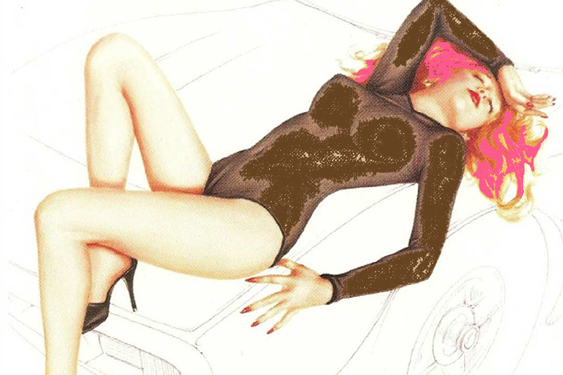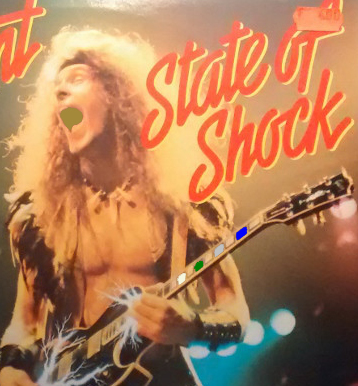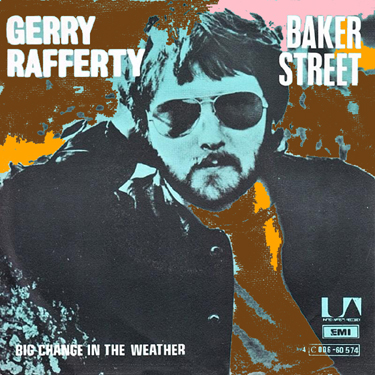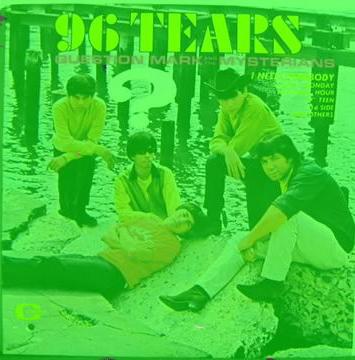SYNESTHESIA


The Cars & Ted Nugent as seen in synethesia
Living with a classic (rock) case of it
By Darren Barakat
(October 2019)
The song starts with a guttural growl and some electric guitar. The growl is brown, and the chords are beige with a hint of green, metallic gray and blue. The singer's voice is the color of peanut brittle. After 23 seconds the drums and another guitar enter the picture. The drum sounds are disc-shaped and dark gray. The second guitar sound is off-white, flowing with little bubbles. It looks like beer foam or frothed milk, except the sound has a slightly blue tint and looks less natural. The rest of the song is a mixture of mostly yellow and white, with a bit of green, blue and dark gray.
I don't just hear music. I see it, often as colors, in my head. I had no idea whether anyone else experienced this when they listened to music, but maybe I suspected they didn't because I never brought it up with my music friends. Recently, I discovered there's a word for it – synesthesia.
Your five senses should be detached from one another but then all connected at the end, like the five fingers on a human hand. For people with synesthesia, two or more of the five fingers are at least partially fused together. So for example, we can't hear sound without seeing colors and pictures.
I hadn't thought much about this until I read about Gus Dudgeon, who worked as a producer for David Bowie and Elton John. He couldn't write music, so he drew what he wanted to hear using colors and squiggly lines to represent voices and musical instruments. Billy Joel told journalist Maureen Seaberg that strong vowel sounds that end words are blue or green, and consonants to him look red or orange. Eddie Van Halen told Billboard magazine that brother Alex's snare drum sound is brown, like "he's beating on a log." A number of other artists that fall outside my normally listening habits, including Charli XCX, Kanye West, and Mary J. Blige, have all said they see music in colors.

I might have picked up the habit in 1982 when I listened to the album Diary of a Madman by Ozzy Osbourne at least 100 times as a junior high school student. Ozzy references "swallowing colors of the sound I hear." But I was doing it before junior high. Four years earlier, "Baker Street" by Gerry Rafferty was (and is still) warm sepia with some pink and orange. The freeform middle section in "Whole Lotta Love" by Led Zeppelin is like a walk through a haunted house, very dark with quick, scary flashes of light and shadows moving through the darkness. The guitar solo that follows is a yellow light with a hint of green. It's a much different yellow than the soft, natural sunlight of "An Ending (Ascent)" by Brian Eno.
Generally, to me, high sounds are light, and low sounds are dark. The top string on a bass guitar sounds black. A snare drum is middle gray. A high-pitched, screaming guitar is usually white or yellow. The guitar through the first two-thirds of "Another Brick in the Wall (Part 2)" by Pink Floyd is sandy, only instead of grains it's made with lines like guitar strings. The bass is black, and the lead vocal is dark gray with a blurred rather than straight edge. The guitar solo at the end is glowing red. In "Candy-O" by the Cars, the rhythm guitars are the color of dark chocolate, and the keyboards and higher-pitched guitar sounds are pink and red, like strawberries. During "Land of 1,000 Nights" by Mahogany Rush, listen to the monster voice that begins at 3:06 and don't stop until the guitar starts back up at 3:53. It's so black you have to take a few seconds for your mind's eye to adjust, like your real eyes would need to in a pitch-black room.
Cover art and word associations influence what I see. Take Spider Woman by Uriah Heep. The similarly named cartoon character Spider Man is red and blue, as is the cover art for parent album The Magician's Birthday. The guitar is shiny light gray and the vocals are a mixture of dull light gray and brown, but it's all on top of a background that's bright red and blue.
Some colors, like blue and green, are rarer than others. A Rolling Stone gathers no moss, so there are no green sounds on a Rolling Stones record. The Stones sound great, but they look like puke. Their sound is a hot dog in a bun with ketchup and mustard on a burnt orange plate (a cigarette dangles from the plate's edge). The beginning of "Free Bird" by Lynyrd Skynyrd is that same burnt orange. "More Than a Feeling" by Boston looks like New England in the fall, a brilliant tapestry of warm-hued leaves.

Strong greens are so rare they bear mentioning. "96 Tears" by Question Mark and the Mysterians is one of the greenest songs ever. It's not like grass. The green glows as if coming from a machine. Maybe the Question Mark in the band name made me think of The Riddler on the old Batman TV show.
Sometimes lyrics are so descriptive they override music, and I see pictures that look like photographs. "Hotel California" by the Eagles starts with sparkling silver guitar. Later, I see people stabbing a half-alive, medium-sized animal in the middle of a table with small knives, and others wandering through hallways while looking lost.
Do you see music the same way I do? Listen to the first 30 seconds of "Paralyzed" by Ted Nugent (the tune I described at the beginning here) and hear if you can see that bubbly, foamy guitar that begins after 23 seconds. If you see it, then you hear it like I do.